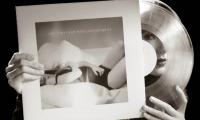LONDON: For the crews of the sleek catamarans foiling above the sparkling waters of Bermuda’s Great Sound, winning the coveted America’s Cup will be as much about design as sailing.
But after almost four years of preparations and millions of dollars developing their 50-foot (15m) America’s Cup Class craft, racing should be tight when it begins on Friday to decide which of the five challengers will take on Oracle Team USA.
“If the boats were all painted the same colour you would struggle to work out who was who,” Artemis Racing skipper Nathan Outteridge told Reuters in an interview last week.
Outwardly, the biggest difference is Emirates Team New Zealand’s defying convention and opting for cyclists rather than “grinders” working winches to power the hydraulics needed to control the hydrofoils and towering wingsail which lift the boat out of the water so that it almost flies above the waves.
“The higher you fly, the quicker you go,” said Outteridge, adding that while the New Zealand set-up is “impressive”, he does not expect it to be a game-changer for the catamarans, which reach speeds of up to 50 knots (92.6 km per hour).
New Zealand, who have won the cup twice, arrived in Bermuda later than the other teams and looked fast in practice in their red, black and white “cat”, perfecting high-speed tacks and gybes as their helmsman Peter Burling changes the boat’s course.
“I don’t think the cycling part is going to win or lose the Cup.
Its more about the (hydraulic) systems,” Outteridge said.
Bermuda’s crystal clear waters are a far-cry from the murky south coast of England where the cup was first won in 1851 by the US schooner “America” in front of Queen Victoria, who was told “there is no second” when she asked about the runner-up.
Britain has never won the cup and Land Rover BAR skipper Ben Ainslie, the most successful Olympic sailor, has built his campaign around bringing it “home” to the base he has set up overlooking the Solent, where the race first took place in 1851.
But while they go into the Louis Vuitton America’s Cup Qualifiers with two bonus points for winning the 2015-16 America’s Cup World Series, Ainslie has not fared so well in practice and last week hit New Zealand, damaging both boats.
Ainslie won the America’s Cup in 2013 as tactician aboard Oracle Team USA and is hoping to go head-to-head against his former team and their skipper Jimmy Spithill.
Spithill told Reuters last week that the Bermuda event will be “the toughest one to date”, with the new boats demanding a whole new level of physical prowess.
“We’ll have the fight of our life, that’s for sure.
“Another veteran plotting to bring Australian Spithill’s streak of success to an end by qualifying for the America’s Cup Match, which starts on June 17, is Dean Barker.
The rangy New Zealander, who is now skipper and CEO of SoftBank Team Japan, was the helmsman of the losing Emirates Team New Zealand crew in 2013. From the cusp of victory in San Francisco Bay, Barker and his team lost eight races in a row as Oracle Team USA staged one of the greatest sporting comebacks.
Japan is a late-comer to the 35th America’s Cup but has had support in Bermuda from the US syndicate, which is backed by Oracle founder Larry Ellison, and has performed well in practice duels against the other challengers.
The other challenge is from Groupama Team France, which has had less time to acclimatise to Bermuda’s wind patterns and the Great Sound racetrack.
Like Britain, Japan and Sweden, the French crew skippered by Franck Cammas hopes to add to the select list of countries — United States, Australia, New Zealand and Switzerland — which have lifted the “Auld Mug”.
Pakistan legend player Sana Mir. — x/TheRealPCB ISLAMABAD: The International Cricket Council has appointed...
Pakistan pacer Shaheen Shah Afridi reacts during the T20 World Cup final against England, on November 13, 2022, at the...
An undated image of Australian cricketer Marcus Stoinis. — AFP/FileNEW DELHI: Marcus Stoinis’s desire to keep...
The flags of the International Hockey Federation and Olympics flutter with the air in this undated photo. —...
National team Head Coach Roelant Oltmans. - PHFISLAMABAD: National team Head Coach Roelant Oltmans lamented missing a...
Training session in progress. — x/TheRealPCBLAHORE: Hosts Pakistan will look to bounce back in the series when they...







